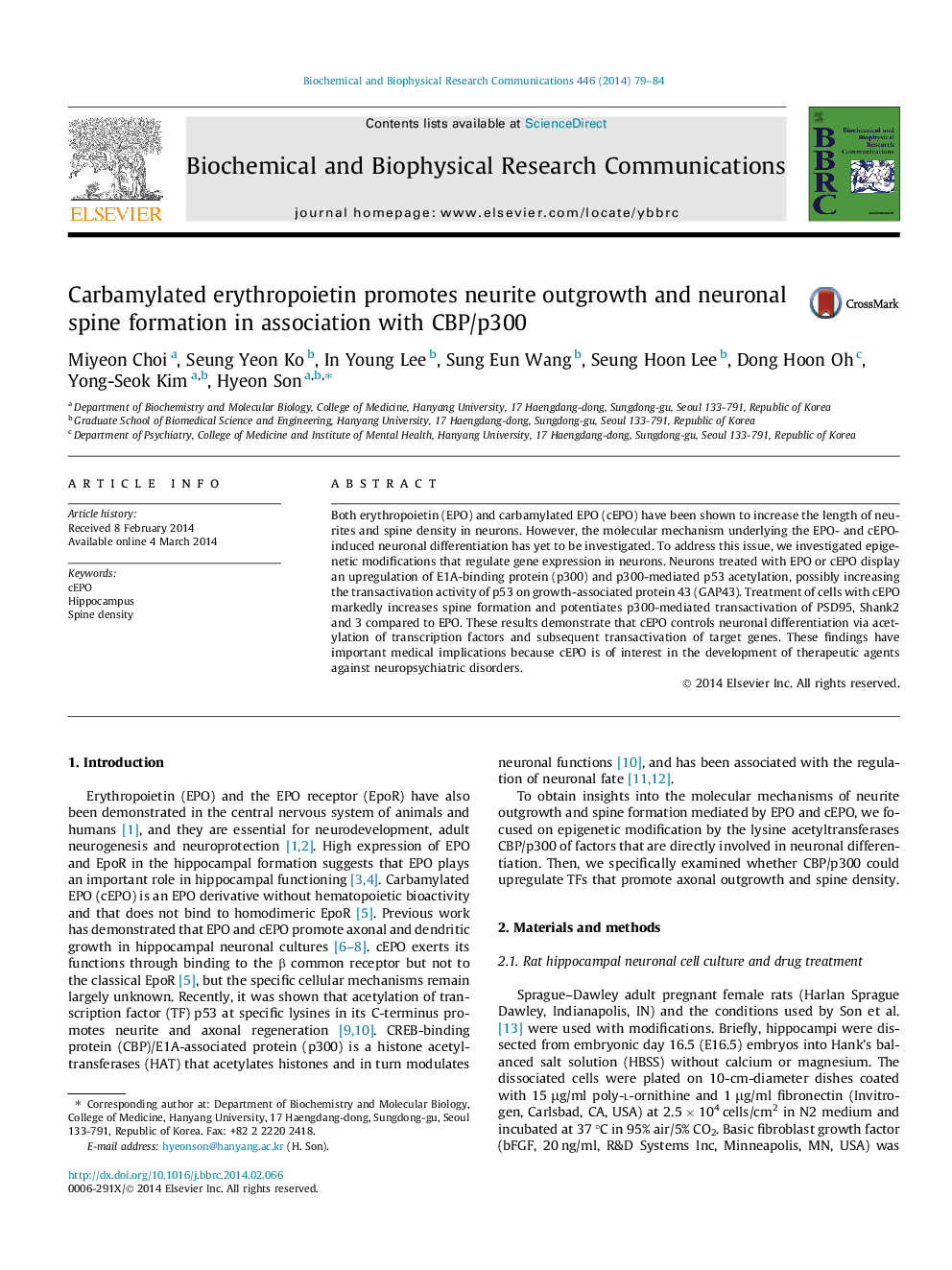| Article ID | Journal | Published Year | Pages | File Type |
|---|---|---|---|---|
| 10755292 | Biochemical and Biophysical Research Communications | 2014 | 6 Pages |
Abstract
Both erythropoietin (EPO) and carbamylated EPO (cEPO) have been shown to increase the length of neurites and spine density in neurons. However, the molecular mechanism underlying the EPO- and cEPO-induced neuronal differentiation has yet to be investigated. To address this issue, we investigated epigenetic modifications that regulate gene expression in neurons. Neurons treated with EPO or cEPO display an upregulation of E1A-binding protein (p300) and p300-mediated p53 acetylation, possibly increasing the transactivation activity of p53 on growth-associated protein 43 (GAP43). Treatment of cells with cEPO markedly increases spine formation and potentiates p300-mediated transactivation of PSD95, Shank2 and 3 compared to EPO. These results demonstrate that cEPO controls neuronal differentiation via acetylation of transcription factors and subsequent transactivation of target genes. These findings have important medical implications because cEPO is of interest in the development of therapeutic agents against neuropsychiatric disorders.
Keywords
Related Topics
Life Sciences
Biochemistry, Genetics and Molecular Biology
Biochemistry
Authors
Miyeon Choi, Seung Yeon Ko, In Young Lee, Sung Eun Wang, Seung Hoon Lee, Dong Hoon Oh, Yong-Seok Kim, Hyeon Son,
